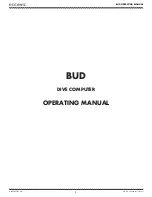
95
Target Connections for Scanning Lasers
Whenever a
scanning
laser is used, there must be a T-251 Pre-Amp in the line. If you are using an R-307
Readout, the preamp must be installed between the target and the R-307 Readout. If you are using more
than one target, there must be a T-251 Pre-Amp in each target connection. R-308 Readouts have a built-in
T-251 Pre-Amp and do not require an external T-251.
Target Connections for Straight Line Lasers
When using straight line lasers, the targets are connected directly to the R-307 Readout.
Calibration of Readouts to Targets
The purpose of calibration is to certify that the readout displays accurate information about the target
location whenever the target is displaced from the exact center position of an oncoming straight line or
scanning laser beam.
All Hamar Laser equipment is aligned and calibrated when it leaves the factory. The alignment or
calibration of most units can be checked or verified in the field. No adjustments in the calibration should
be necessary unless a new target has been added to the setup. Because the readout units are rugged and
built to withstand the shop floor environment, we recommend that any unit showing severe miscalibration
(position changes shown on the readout display are +15 percent of the actual physical position change) be
checked and serviced by Hamar Laser factory technicians.
When a new target is purchased, any necessary adjustments can be made immediately before using the
equipment. If there is a question on the result of an alignment, the readout can be calibrated by the
operator. If you must calibrate the readout to the target, the process involves:
•
Using micrometers (or another traceable reference) to move the target an exact amount off of absolute
center or "zero".
•
Checking the numbers on the readout display.
•
Adjusting those displayed numbers by changing the set of the calibration trimpot.
Hamar targets and readouts leave the factory calibrated to within 5 percent. This means that any
numerical information displayed on the readout can have a maximum error of 5 percent. For example, the
total of a 5 percent calibration error on a reading of
.001 in.
would actually be
.00005 in.
(a very small
deviation). The table below shows the allowable 5 percent error for readings when the scale is set to
.0001
in.
READOUT DISPLAY
ALLOWABLE 5 PERCENT ERROR
25.0 in.
.0013 in.
(1.3 in display units)
.010 in.
.0005 in.
(0.5 in display units)
.001 in.
.00005 in.
(.000 in display units)
.0001 in.
.000005 in.
(00.0 in display units)
As the table shows, a 5 percent deviation of the numbers displayed on the readout is quite small. In most
procedures the operator will center the target in the path of the laser beam so that all readings are
deviations from the null center point and are displayed as close to 0.000
as possible on the readout. As
with most electronic devices, accuracy is a matter of tuning the receiver to the signal. For further
information, see the sections of this manual titled
Calibration Checking Procedure
on Page 96 and
The
Calibration Trimpot
on Page 98 for more detailed information.
Summary of Contents for STEALTH Series
Page 1: ......
Page 69: ...65 Appendix A Equipment Drawings L 733 Precision Geometry Laser...
Page 70: ...66 L 743 Ultra Precision Geometry Laser...
Page 71: ...67 A 1519 A 1520 Universal Wireless Targets...
Page 72: ...68...
Page 73: ...69...
Page 74: ...70...
Page 75: ...71...
Page 76: ...72...















































